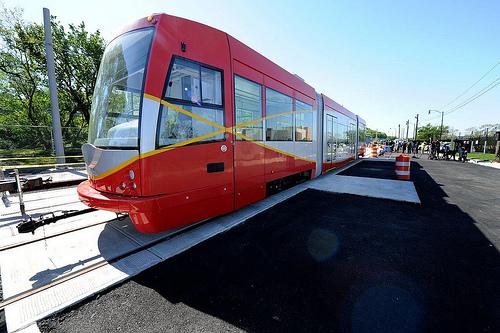WASHINGTON—Director of the District of Columbia Department of Transportation Terry Bellamy appealed to private sector transportation professionals to invest in the District’s 37-mile streetcar project at the first annual Transportation & Power Infrastructure (TPI) Summit at the Knight Conference Center at the Newseum in Washington, on July 10.
“We’ve got a 22 mile RFQ for street cars. So we are looking for firms to come in and be a part of this great project, 22 miles of streetcars in Washington, D.C. So far, all local money. The only federal money we have in the project is $1 million for consultative analysis to run the streetcar from Benning Road to Georgetown. The community has basically said that they want to move this project,” said Bellamy.
The 37-mile streetcar system would bring back, long-gone streetcars to the district. Once one of the city’s main transport systems in the first half of the 19th century, it would touch all eight wards according to the project website. The tracks would span from Oklahoma Avenue in Anacostia in the east and Georgetown in the west.
The project aims to attract new transit ridership and to inspire transit oriented affordable housing development along the streetcar lines. The modern streetcars, set to hit the streets this year, have evolved from the now antique trolleys into a more fast-moving means of transport.
The D.C. Office of Planning’s Street Car Land Use Study predicts that the completed network will add $5 billion to $7 billion to the value of existing property and will spark an additional $5 billion to $8 billion in development in the 10 years following its completion.
The first segment of the line from Benning Road and Oklahoma Avenue to Union Station is scheduled to open in fall of 2013. The 2.4-mile stretch of line is in the last 20 percent of construction according to the project website. Construction on the line was nearly completed in 2011 during the Great Streets roadway construction project, a local government initiative to revitalize “under-invested corridors” into thriving, inviting neighborhoods.
Transportation and energy industry leaders shared investment and contracting opportunities at the TPI conference.
“Today we are holding our first conference here in the nation’s capitol. We had one in New York, it was fantastic, we had about 160 small businesses, woman-owned businesses to talk about transportation and infrastructure projects, throughout the New York region, we similarly decided to do one in D.C. because this region has a tremendous amount of transportation and infrastructure projects that are underway and that have been underway for a long time,” said Monique Poydras, a local volunteer representative for the Transportation Diversity Council.
Attendees of the TPI summit heard from John Hale, the deputy director of the Office of Small and Disadvantaged Business Utilization, who spoke of contracting opportunities with the Department of Energy, one-year to five-year contracts with the DOE worth from $4 million to $200 million. Hale pitched training and logistics contracts and IT support services contracts.
On a more local level, Denise Roberts, outreach manager for Prince George’s County said that $2 billion to $7 billion in contract projects with the county will be coming up in the next five years.


